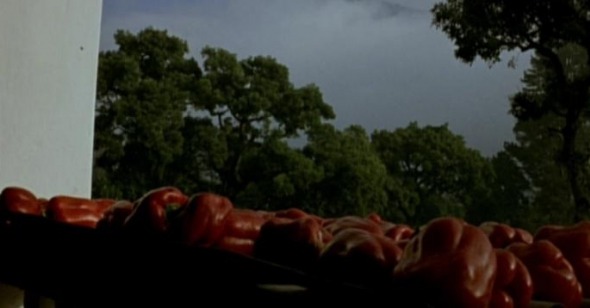English-speaking American cinema’s been getting us down. It was an unusually dismal summer at the movies, and while it’s true that nearly every year now, the sweaty months are rough going for film lovers, there was something about this year’s crop of bloated sequels, incomprehensible action “spectacles,” and kiddie flicks (a category which now seems to encompass 5- to 35-year- olds) that left us feeling more than a little unsatisfied. And then a funny thing happened: Alamar opened, providing the movie summer’s first true breath of fresh air. (Yes, despite movie culture’s consensus, The Social Network wasn’t the film that single-handedly saved cinema as we know it.)
With that Mexican film’s release, we began wondering whether Reverse Shot needed to give contemporary Latin American cinema a more thorough inspection. As an example, looking beyond the over-hyped self-proclaimed “Three Amigos” (Iñárritu, Cuarón, and del Toro), filmmaking today in Mexico is an embarrassment of riches, with not only Alamar’s Pedro Gonález-Rubio but also Fernando Eimbcke (Lake Tahoe), Julián Hernández (Broken Sky), Rigoberto Pérezcano (Northless), and Carlos Reygadas (Silent Light). But if we go further south, it turns out that there’s arresting filmmaking erupting all over, in countries we rarely hear discussed on the usual cinephile circuits, such as Peru (Claudia Llosa), Ecuador (Tania Hermida), Uruguay (Pablo Stoll), and Chile (Pablo Larraín). And of course, we must mention the ongoing surge of amazing work in Argentina, with Lucrecia Martel (The Headless Woman), Lisandro Alonso (Liverpool), and Pablo Trapero (Lion’s Den) at the forefront.
Clearly, we would never consider ourselves anything like experts on these countries' individual cinemas. Yet that’s why we went exploring. For our 28th symposium, Reverse Shot’s American All-Stars, we asked our writers to pick a contemporary filmmaker from a Latin American country who they’d like to champion; this could trigger a longer discussion about an oeuvre or an idea on a national cinema—politically, economically, aesthetically—or it could remain a close reading of a film itself. And the director needn’t be one of any “new wave,” just someone who is still working in some capacity.
We’re pleased with the results, even if we knew the risks of the challenge: most Americans can speak to the general differences in landscape and culture that separate New Jersey from Colorado, but who among us can parse the differences between Paraguay and Uruguay, aside from the fact that one is landlocked? Given that we’re dealing with a region that is, largely, linked by language and a shared colonial history, it’s even easier to take a hegemonic view. Most of those writing in this issue (but certainly not all) are Norteamericanos, born and bred, and our combined knowledge of regional specificities is probably fairly slim.
Film writers must always grapple with the circumscribed cultural information we receive from a given film; like archaeologists we comb through the details of a work looking for traces of anything—patterns, symbols, ephemera—to help us draw larger conclusions while trying exclude those pieces of information that result from the specificities of individual artistry. There are, of course, limits to the degree to which one artist can be used to stand in for a place. (Or grouped with another—spatiotemporal, chronological, etc.). Some films actively refuse these readings. This is all to say that Reverse Shot’s survey of Latin American cinema will necessarily be imperfect. Even if we ended up with some gaps around such cinematically remote spots such as Costa Rica, Cuba, Guatemala, Honduras, and Venezuela, we hope that, as we did, you’ll learn something about a new filmmaker you may not have previously known, and perhaps get a sense of the richness and variety of Latin America’s current cinematic output.
